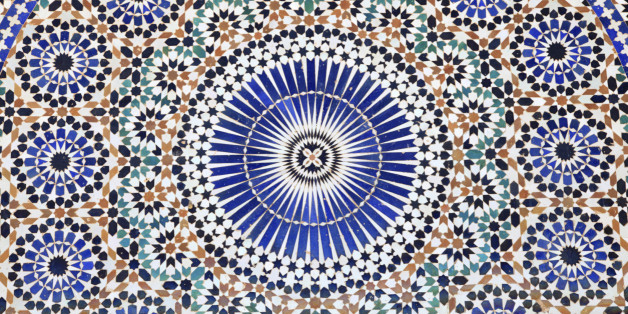Early Muslims’ attitude to art in the sacred space

What’s clear is that early Muslims maintained a separation between art considered appropriate for sacred and secular spaces.
In the religious space, the Abbasids, the second Muslim dynasty, followed their predecessor Umayyads. Both employed great restraint in terms of decoration.
So the Dome of the Rock, built by the Umayyads, followed Christian techniques of construction in its arches, domes, windows and masonry, but made a remarkable change in the mosaics that decorate a vast span of about 280 square metres. These do not contain a single living creature. Script – the writing running below the ceiling – is used as a decoration.
This was symbolically significant because the Dome was the first shrine of the new faith.
Similarly, the mosaics in the Great Mosque of Damascus, built in 707, are devoid of living figures and have large trees instead. (Trees and plants, incidentally, are said by Muslims, to lack the “breath of life”, that is the ability to gaze, move and make sounds.)
Both in the Umayyad and Abbasid periods, mosques were decorated in a sober, non-figural fashion. A mosque in Samarra built under the Abbasid Caliph Al Mutawakkil (847-61) is considered a typical example. So is the Great Mosque in Kairouan, originally built around 670, then re-built in the early ninth century on the watch of the Aghlabid governors who were semi-independent of the Abbasid caliphate.
The strict divide between art for the secular space and for the religious may be clearest from Mshatta, an Umayyad desert palace in present-day Jordan. On three of the four walls, animals move amid the carved stone foliage. But on the fourth, the qibla wall that indicates the direction in which a Muslim should face in prayer, there is only vegetation, no living creature.
Tomorrow: Muslim opinion gradually hardened towards aniconism

